- About
- Contact
- OHIP Surgeries
- Services
Non-Surgical Solutions
Surgical Solutions
Face
Body
Breast
Benign Lesions
- Products
- Post-Op
- Fees & Financing
- Intake
Menu
Menu
Tummy tuck surgery, also known as abdominoplasty, removes excess fat and skin and, in most cases, restores weakened or separated muscles creating an abdominal profile that is smoother and firmer.
A flat and well-toned abdomen is something many of us strive for through exercise and weight control. Sometimes these methods cannot achieve our goals.
Even individuals of otherwise normal body weight and proportion can develop an abdomen that protrudes or is loose and sagging. The most common causes of this include:
A tummy tuck is not a substitute for weight loss or an appropriate exercise program.
Although the results of a tummy tuck are technically permanent, the positive outcome can be greatly diminished by significant fluctuations in your weight. For this reason, individuals who are planning substantial weight loss or women who may be considering future pregnancies would be advised to postpone a tummy tuck.
A tummy tuck cannot correct stretch marks, although these may be removed or somewhat improved if they are located on the areas of excess skin that will be excised.
A tummy tuck is a highly individualized procedure. You should do it for yourself, not to fulfill someone else’s desires or to try to fit any sort of ideal image.
In general, you may be a good tummy tuck candidate if:
During your tummy tuck consultation be prepared to discuss:
Your tummy tuck surgeon will also:
The success and safety of your tummy tuck procedure depends very much on your complete candidness during your consultation. You’ll be asked a number of questions about your health, desires and lifestyle.
The consultation is the time to ask your plastic surgeon questions. To help, we have prepared a checklist of questions to ask your tummy tuck surgeon that you can take with you to your consultation.
It’s very important to understand all aspects of your tummy tuck procedure. It’s natural to feel some anxiety, whether it’s excitement for your anticipated new look or a bit of preoperative stress. Don’t be shy about discussing these feelings with your plastic surgeon.
Use this checklist as a guide during your tummy tuck consultation:
The decision to have plastic surgery is extremely personal, and you’ll have to decide if the benefits will achieve your goals and if the risks and potential complications of tummy tuck surgery are acceptable.
You will be asked to sign consent forms to ensure that you fully understand the procedure and any risks.
Tummy tuck risks include:
These risks and others will be fully discussed prior to your consent. It’s important that you address all your questions directly with your plastic surgeon.
In preparing for tummy tuck surgery, you may be asked to:
A tummy tuck may be performed in an accredited office-based surgical facility, licensed ambulatory surgical center or a hospital.
If your tummy tuck is performed on an outpatient basis, be sure to arrange for someone to drive you to and from surgery and to stay with you for at least the first night following surgery.
A tummy tuck procedure includes the following steps:
Medications are administered for your comfort during the surgical procedures. The choices include intravenous sedation and general anesthesia. Your doctor will recommend the best choice for you.
A full tummy tuck requires a horizontally-oriented incision in the area between the pubic hairline and belly button.
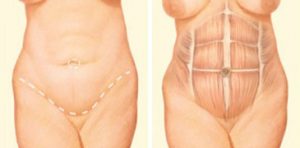
The shape and length of the incision will be determined by the amount of excess skin. Once the abdominal skin is lifted, the underlying weakened abdominal muscles are repaired.
A second incision around the navel may be necessary to remove excess skin in the upper abdomen.
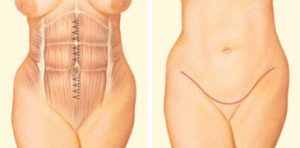
The upper abdominal skin is pulled down like a window shade. The excess skin is trimmed and the remaining skin is sutured together. A new opening for the belly button is created. The belly button is popped through to the surface and sutured into position.
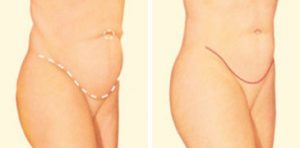
Sutures, skin adhesives, tapes or clips close the skin incisions.
Your tummy tuck will result in a flatter, firmer abdominal contour that is more proportionate with your body type and weight. Get more information about tummy tuck results.
During your tummy tuck recovery, dressings or bandages may be applied to your incisions, and you may be wrapped in an elastic bandage or a compression garment to minimize swelling and support your abdomen as it heals following surgery.
Small, thin tubes may be temporarily placed under the skin to drain any excess blood or fluid that may collect.
You will be given specific instructions that may include:
Be sure to ask your tummy tuck surgeon specific questions about what you can expect during your individual recovery period:
The final results of tummy tuck surgery may be initially obscured by swelling and your inability to stand fully upright until internal healing is complete.
Within a week or two, you should be standing tall and confident in your new slimmer profile. Your tummy tuck will result in a flatter, firmer abdominal contour that is more proportionate with your body type and weight.
Previous abdominal surgery may limit the potential results of a tummy tuck.
In women who have undergone cesarean section, the existing scars may be incorporated into the new scar.
The tummy tuck scar may take several months to a year to fade as much as it will.
Although good results are expected from your procedure, there is no guarantee. In some situations, it may not be possible to achieve optimal results with a single surgical procedure and another surgery may be necessary.
Following your physician’s instructions is essential to the success of your surgery.
It’s important that the surgical incisions are not subjected to excessive force, swelling, abrasion or motion during the time of healing. Your doctor will give you specific instructions on how to care for yourself.
View before and after photos of tummy tuck procedures performed by members of the American Society of Plastic Surgeons.
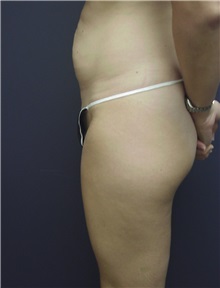 | 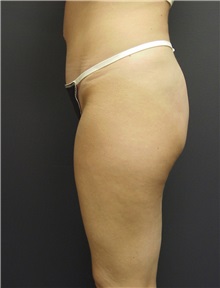 | 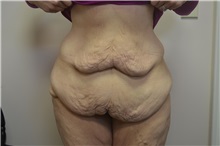 | 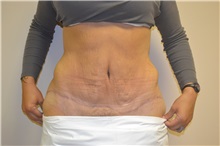 |
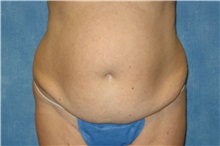 | 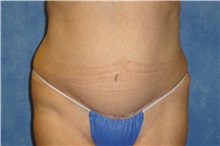 |  | 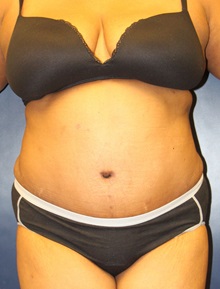 |
 | 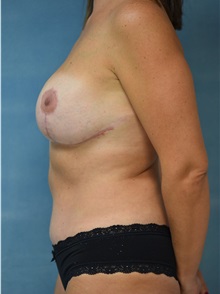 | 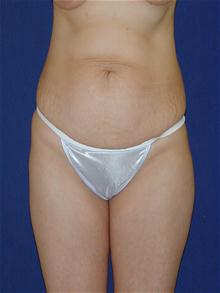 | 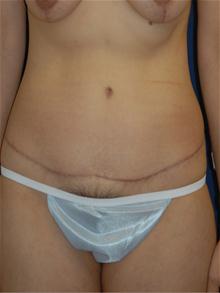 |
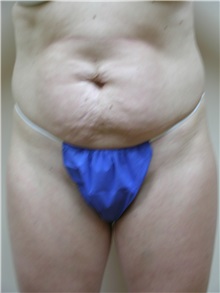 | 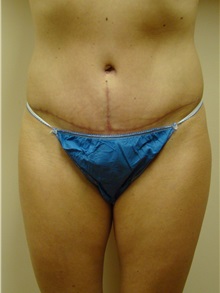 | 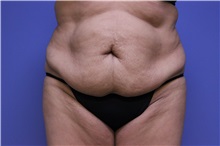 | 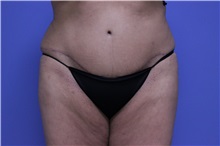 |
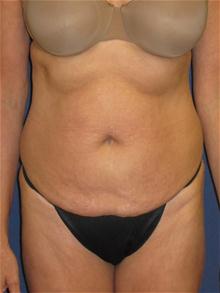 | 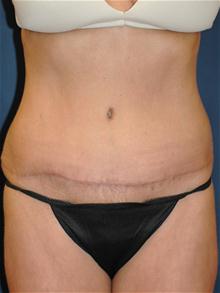 | 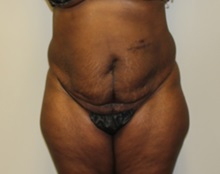 |  |
A surgical procedure to correct the apron of excess skin hanging over your abdomen.
Condition in which abdominal muscles have separated.
Drugs and/or gases used during an operation to relieve pain and alter consciousness.
Blood pooling beneath the skin.
Sedatives administered by injection into a vein to help you relax.
Also called lipoplasty or suction lipectomy, this procedure vacuums out fat from beneath the skin’s surface to reduce fullness.
A drug is injected directly to the site of an incision during an operation to relieve pain.
Stitches used by surgeons to hold skin and tissue together.
A surgical procedure to correct the apron of excess skin hanging over your abdomen.
Tummy tuck surgery involves many choices. The first and most important is selecting a board-certified plastic surgeon you can trust who is a member of the American Society of Plastic Surgeons (ASPS).
ASPS member surgeons meet rigorous standards:
Do not be confused by other official-sounding boards and certifications.
The ABPS is recognized by the American Board of Medical Specialties (ABMS), which has approved medical specialty boards since 1934. There is no ABMS recognized certifying board with “cosmetic surgery” in its name.
By choosing a member of the American Society of Plastic Surgeons, you can be assured that you are choosing a qualified, highly-trained plastic surgeon who is board-certified by the ABPS or the Royal College of Physicians and Surgeons of Canada.
Suite 301 - 272 Charlotte Street, Peterborough, Ontario, Canada
+1 705-876-9003
+1 705-874-5410
Monday | 9:00 AM - 3:00 PM
Tuesday | 9:00 AM - 3:00 PM
Wednesday | 9:00 AM - 3:00 PM
Thursday | 9:00 AM - 3:00 PM
Friday | 9:00 AM - 12:00 PM
(summer hours)
*Subject to change with holidays, etc.